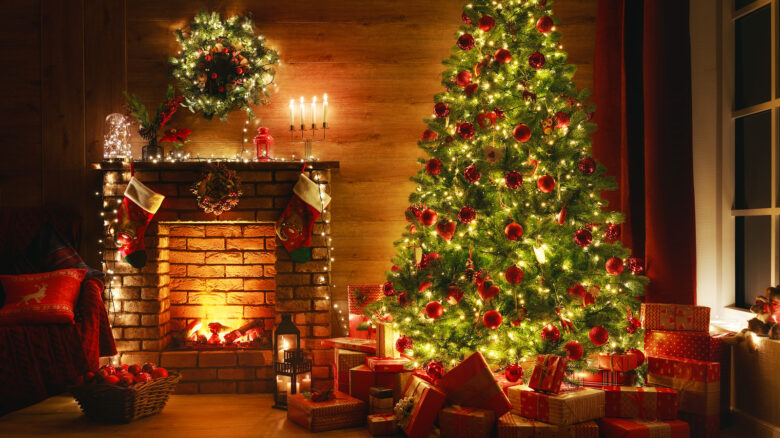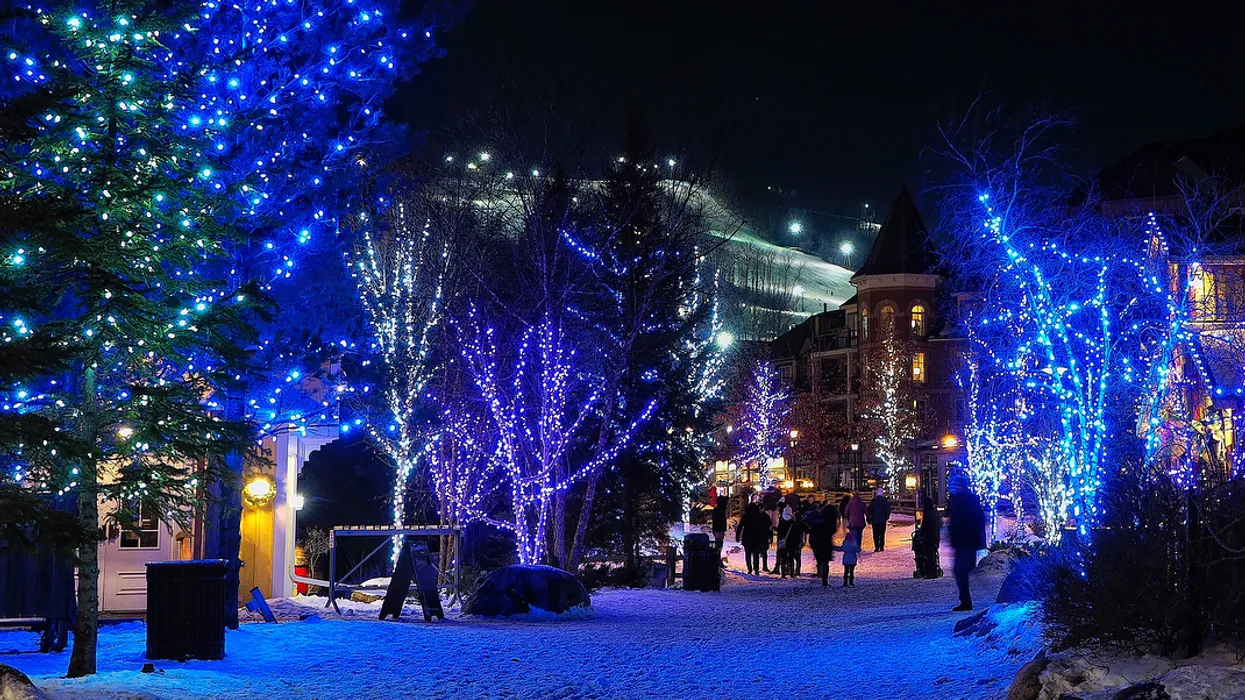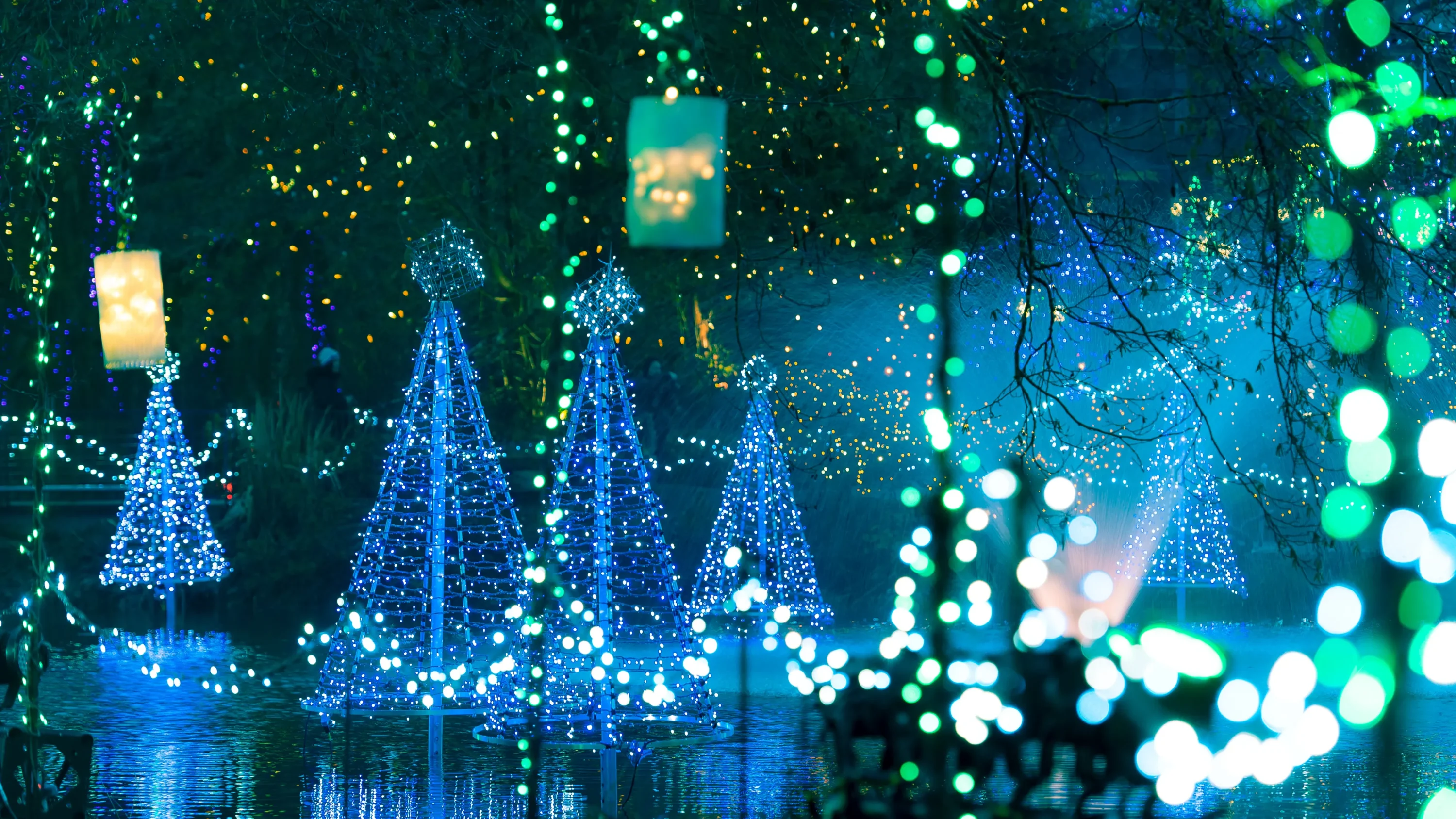As the winter months settle in and the days grow shorter, there’s one unmistakable sign that the holiday season is upon us: the twinkling lights that adorn homes, trees, and streets. Christmas lights have become an integral part of our holiday traditions, bringing warmth and cheer to even the darkest and coldest of nights. But have you ever wondered about the history and traditions behind these luminous decorations? In this blog post, we’ll take a journey through time to explore the fascinating history and enduring traditions of Christmas lights.
Contents
- The Origins of Christmas Lights
- The Advent of Christmas Trees and Candles
- The Invention of Electric Christmas Lights
- The Twinkling Transformation of Christmas Lights
- The Role of Christmas Lights in Holiday Decorations
- Outdoor Christmas Light Displays and Competitions
- Christmas Lights Around the World
- Conclusion
The Origins of Christmas Lights

Source: grunge.com
The tradition of decorating with lights during the holiday season can be traced back to ancient civilizations. The ancient Egyptians, for example, celebrated the winter solstice by placing candles and small oil lamps on their trees to symbolize the return of the sun god, Ra. Similarly, the ancient Romans celebrated Saturnalia, a festival dedicated to the god Saturn, with candles and lights. These early uses of lights during the winter months were rooted in the hope of bringing light and warmth to the darkest days of the year.
The Advent of Christmas Trees and Candles
The custom of bringing evergreen trees into homes during the winter months has been a part of European tradition for centuries. It’s believed to have been popularized in Germany in the 16th century and gradually spread throughout Europe. These early Christmas trees were often adorned with candles, which symbolized Christ as the light of the world.
However, using real candles on Christmas trees posed a significant fire hazard, and accidents were not uncommon. It wasn’t until the 18th century that a safer alternative was developed. In 1700, the German city of Dresden is credited with creating the first known Christmas tree lights by using small wax candles with glass holders to protect the flame. This innovation marked the beginning of a safer and more widespread use of lights on Christmas trees.
The Invention of Electric Christmas Lights
The introduction of electric Christmas lights revolutionized holiday decorating. Thomas Edison, the inventor of the incandescent light bulb, deserves recognition for making Christmas lights as we know them today possible. In 1880, Edison hung a string of electric lights outside his Menlo Park laboratory in New Jersey, creating a sensation among onlookers. However, it wasn’t until 1882 that Edward Johnson, an Edison associate, hand-wired 80 red, white, and blue bulbs and displayed them on his Christmas tree, becoming the first person to illuminate a Christmas tree with electric lights.
The adoption of electric lights was initially slow due to their high cost and the need for professional installation. It wasn’t until the early 20th century that electric Christmas lights became more affordable and accessible to the general public. With advancements in technology and mass production, these lights began to replace candles on Christmas trees and quickly gained popularity.
The Twinkling Transformation of Christmas Lights

Source: narcity.com
Over the years, Christmas lights have evolved from simple strands of white bulbs to a dazzling array of colors, shapes, and sizes. The introduction of twinkle lights, which feature bulbs that flash or fade in and out, added a new level of enchantment to holiday displays. Twinkle lights were first introduced in the mid-20th century and quickly became a favorite choice for holiday decorators and Christmas designers.
Today, Christmas lights are available in a wide range of styles, including LED lights that are energy-efficient and long-lasting. Many households take pride in creating intricate and artistic light displays, some even synchronized to music, which have become popular attractions in their communities. These displays, often the result of collaboration between enthusiastic homeowners and professional Christmas designers, have become a cherished part of the holiday season, bringing joy to both young and old alike.
The Role of Christmas Lights in Holiday Decorations
As Christmas lights evolved, they became a central element in the broader spectrum of Christmas decorations. Beyond the traditional Christmas tree, these lights have been creatively incorporated into various aspects of holiday decor. From wreaths and garlands to window displays and rooftop outlines, Christmas lights enhance the festive atmosphere, adding sparkle and joy to the holiday season.
In many cultures, the act of decorating homes and public spaces with Christmas lights and other ornaments is a cherished tradition. These decorations often include a mix of lights, baubles, tinsel, and figurines, each adding a unique touch to the festive ambiance. The use of lights in these decorations not only illuminates the physical space but also symbolizes the warmth and brightness of the season, bringing communities and families together in a shared celebration of joy and goodwill.
Outdoor Christmas Light Displays and Competitions
In addition to decorating Christmas trees and the interior of homes, outdoor Christmas light displays have become a beloved tradition. Many people go all out to transform their homes and gardens into festive wonderlands. These outdoor displays often feature elaborate scenes, lighted figurines, and even full-sized sleighs and reindeer.
Some communities hold competitions for the best outdoor Christmas light displays, encouraging friendly rivalries among neighbors. The desire to outdo one another has led to the creation of awe-inspiring and innovative displays that attract visitors from near and far. One of the most famous of these competitions is the Great Christmas Light Fight, a televised series that showcases the most dazzling displays from across the United States.
Christmas Lights Around the World

Source: cntraveler.com
While Christmas lights are widely popular in Western countries, they have also made their mark in other parts of the world. In Japan, for example, it has become a tradition to decorate trees with lights for the winter holiday season. The city of Kobe is famous for its Luminaria Festival, which features a stunning light display in memory of the victims of the Great Hanshin Earthquake of 1995.
In India, Diwali, the Festival of Lights, is celebrated with the illumination of homes, streets, and public spaces using oil lamps, candles, and electric lights. This festival, which usually falls in October or November, symbolizes the triumph of light over darkness and good over evil.
Conclusion
Christmas lights have come a long way from their humble beginnings as candles on evergreen trees. They have evolved into a global tradition that brings warmth, joy, and a sense of wonder to the holiday season. From the early use of candles to the invention of electric lights and the modern marvel of LED technology, Christmas lights have continued to captivate our hearts and imaginations.
Whether you’re admiring a neighbor’s meticulously decorated home or strolling through a bustling holiday market illuminated by thousands of twinkling lights, there’s no denying the magical effect that Christmas lights have on our spirits. They serve as a symbol of hope, unity, and the enduring spirit of celebration that brings people together during the most wonderful time of the year. So, as you gather with loved ones this holiday season, take a moment to appreciate the history and traditions behind those beautiful Christmas lights that brighten our homes and hearts.
